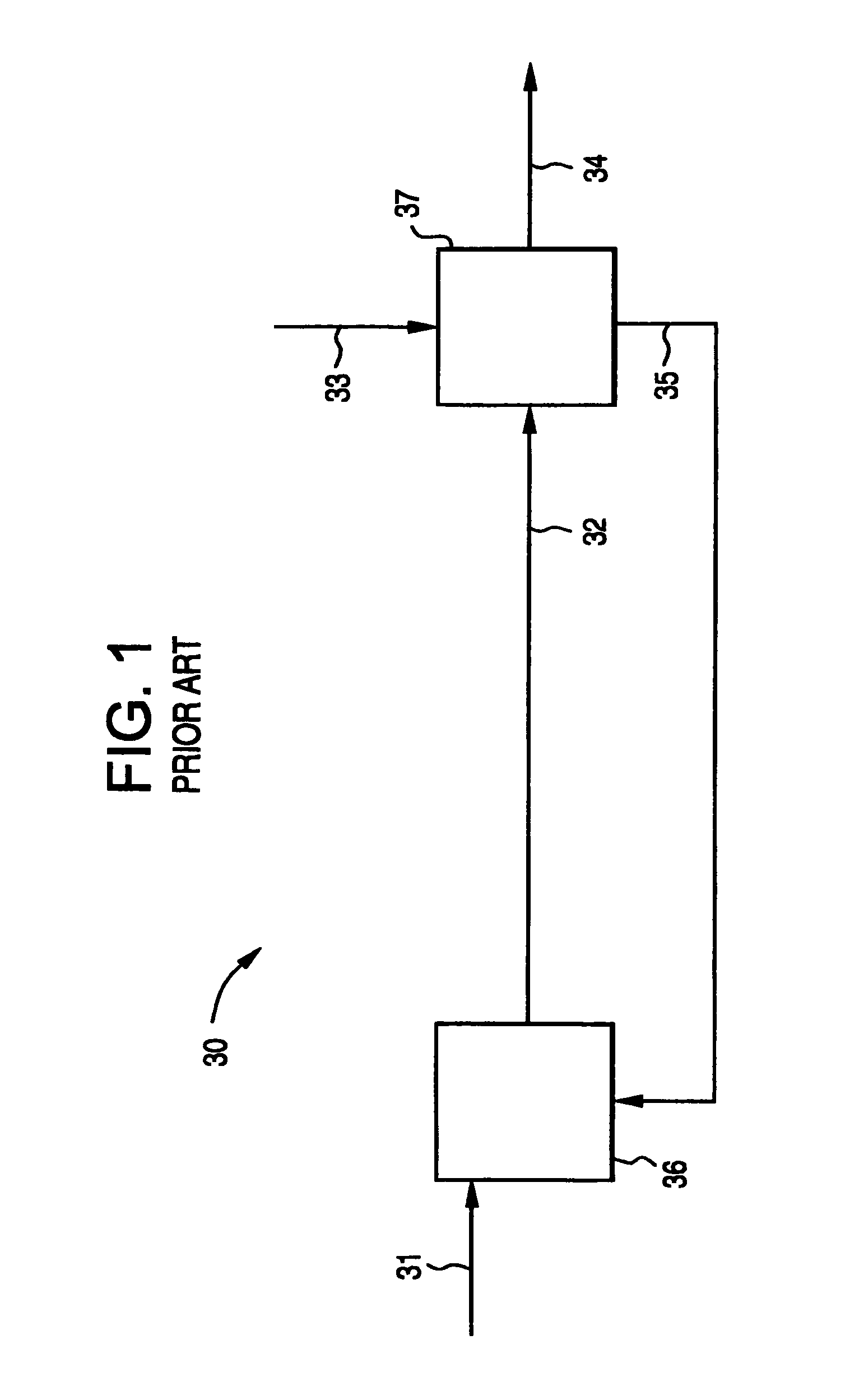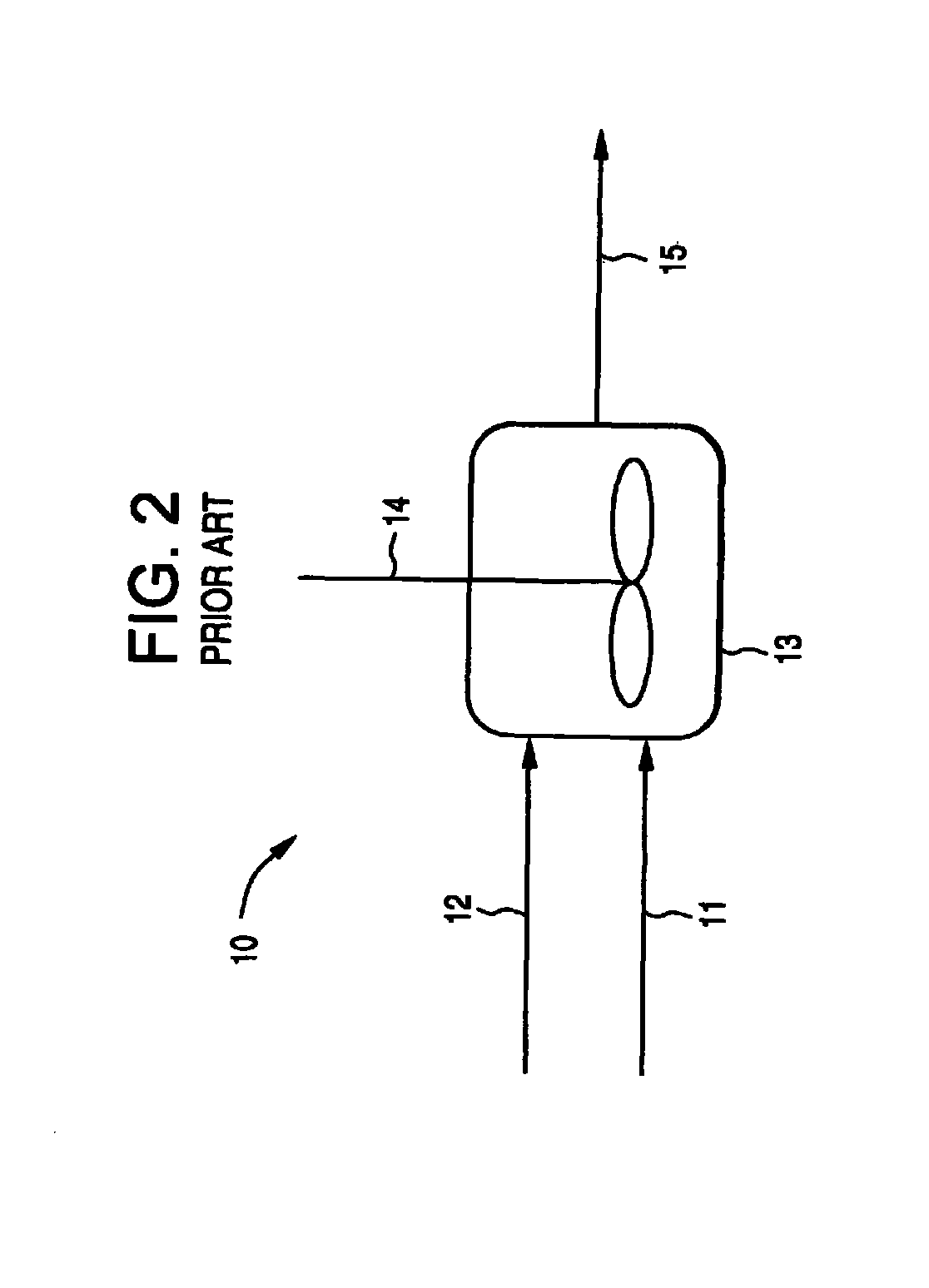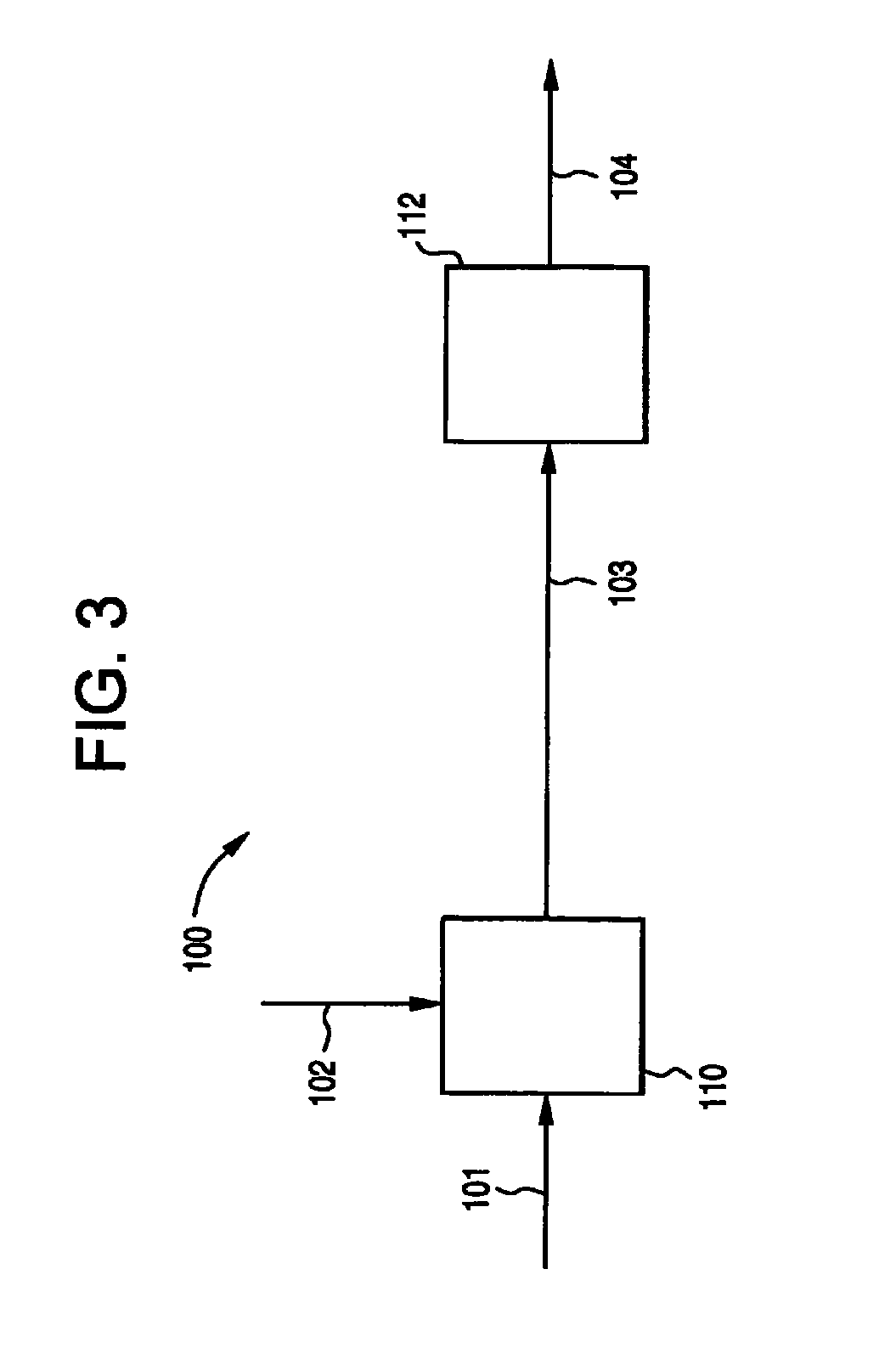Process and apparatus for producing chlorohydrin
a chlorohydrin and apparatus technology, applied in the direction of liquid chemical processes, gas-gas reaction processes, liquid-gas reaction of thin-film type, etc., can solve the problems of high cost of recovery and recycling unreacted hcl from reaction effluent or distillation column product, and increase the cost of recovery and recycling. , to achieve the effect of improving hcl efficiency, reducing vessel volume and achieving the same reaction efficiency
- Summary
- Abstract
- Description
- Claims
- Application Information
AI Technical Summary
Benefits of technology
Problems solved by technology
Method used
Image
Examples
example 1
[0119]In a computer simulated experiment, two separate reactant streams, the first stream being 1.592 kg / hour of an effluent stream (stream 101 in FIG. 3) from a dichlorohydrin producing reactor containing 11.7% by mass HCl and the second stream (stream 102 in FIG. 3) being 0.71 kg / hour of glycerol, were mixed together comprising stream 103 in FIG. 3, containing 8.1% by mass HCl. Composition of the mixed stream 103 is shown in Example 1 in Table 1. The mixed stream 103 was fed into a plug flow reactor (PFR) operating at a temperature of 100° C. and a pressure of 100 psig (791 kPa) and a residence time of 10 minutes. Composition of the effluent stream from the plug flow reactor was estimated by the simulation. Composition of the effluent stream 104 from the plug flow reactor is shown in Example 1 in Table 1. Concentration of HCl in the effluent stream from the plug flow reactor was 3.9% by mass, resulting in HCl conversion of 52%. Concentration of glycerol decreased from 31% by mass ...
example 2
[0125]In a laboratory experiment, 1.960 kg / hr of a liquid effluent stream from a hydrochlorination reactor (Stream 201) having the composition shown in Table 2 below, was mixed with 0.574 kg / hr of a stream consisting of essentially 100% glycerol (Stream 202), in an inline static mixer. The mixed stream was fed to a plug flow reactor consisting of a 1 inch glass-lined pipe containing mixing elements inside to provide radial mixing. Residence time in the reactor was about 15 minutes. The effluent (Stream 203) from the plug flow reactor contained 3.3% by mass HCl and 8.1% by mass 1-monochlorohydrin (1-MCH). The plug flow reactor was heat traced and temperature of the reactor was controlled at 100° C. Although, not wishing to be bound by this example, % conversion of HCl was 46% in this example. HCl conversion in various cases will depend on several factors such as residence time, concentration of HCl in the effluent from the first hydrochlorination reactor, temperature, catalyst concen...
PUM
| Property | Measurement | Unit |
|---|---|---|
| wt. % | aaaaa | aaaaa |
| wt. % | aaaaa | aaaaa |
| temperature | aaaaa | aaaaa |
Abstract
Description
Claims
Application Information
 Login to View More
Login to View More - R&D
- Intellectual Property
- Life Sciences
- Materials
- Tech Scout
- Unparalleled Data Quality
- Higher Quality Content
- 60% Fewer Hallucinations
Browse by: Latest US Patents, China's latest patents, Technical Efficacy Thesaurus, Application Domain, Technology Topic, Popular Technical Reports.
© 2025 PatSnap. All rights reserved.Legal|Privacy policy|Modern Slavery Act Transparency Statement|Sitemap|About US| Contact US: help@patsnap.com



